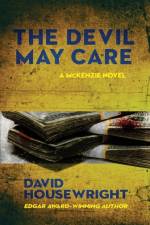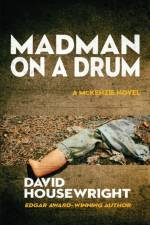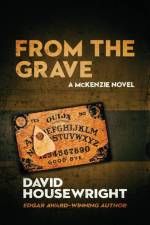av David Housewright
241
Frank “Jelly” Nash was dead. And since the notorious bank robber was shot in the head in 1933 during a daring escape attempt, he was deader than most. So why was he sending letters and emails to Rushmore McKenzie, asking the retired cop, unexpected millionaire, and unlicensed P.I. for help?To answer the question, McKenzie joins forces with Ivy, a beautiful woman from his past—and her boyfriend—in a frantic search for $8 million in gold that Jelly stole just before his death. But they aren’t the only ones looking. So are a couple of two-bit thugs, a woman named Heavenly, a local big-wig with much to hide, and an odd assortment of ne’er-do-wells.The search delves deeply into St. Paul, Minnesota’s colorful and infamous past as the treasure-seekers scurry for clues. In the early 20th century, St. Paul was an open city—a place where gangsters could come and stay unmolested by the local authorities as long as they committed no crimes within the city limits. John Dillinger, Bugsy Siegel, Ma Barker’s murderous brood, Alvin “Creepy” Karpis, Machine Gun Kelly, Pretty Boy Floyd, notorious gunman Vern Miller, and yes, Frank Nash, were often spotted frequenting the city’s clubs and casinos, and their activities are carefully examined as the rivals dual each other.The treasure hunt turns unexpectedly deadly when the boyfriend is shot dead outside of Ivy’s apartment. Suddenly, McKenzie is looking for more than a legendary stash from seventy-five years ago, he’s looking for a stone killer and the long-hidden truth behind Jelly’s gold.Praise for JELLY’S GOLD:“In Edgar-winner Housewright’s enjoyable sixth novel to feature Rushmore McKenzie readers get a dual treat as the likable PI deals with a parade of present-day sharpies and gold hunters, while Housewright retells the story of the wholesale corruption that for decades made St. Paul a playground for a who’s who of gangsters, including John Dillinger, Baby Face Nelson and others who hobnobbed with St. Paul’s upper crust.” —Publishers Weekly“Housewright not only writes a compelling historical mystery here, but also engages in reconstructive history, using contemporary accounts to trace Nash’s movements in 1933. He also employs a nifty device to bring the history into the novel, careening between McKenzie and other seekers of the prize and Nash’s own words cast into fictional form. Readers will learn a great deal of fascinating information, including the fact that Nash’s nickname Jelly stands for his favorite safecracking device, nitroglycerin. Top notch.” —Booklist, starred review“A clever entertainment driven by an amiable protagonist—Housewright’s best in quite a while.” —Kirkus Reviews“If you haven’t discovered Housewright, you’re in for a real treat—this is a real gem from one of America’s best crime novelists.” —Lansing State Journal











